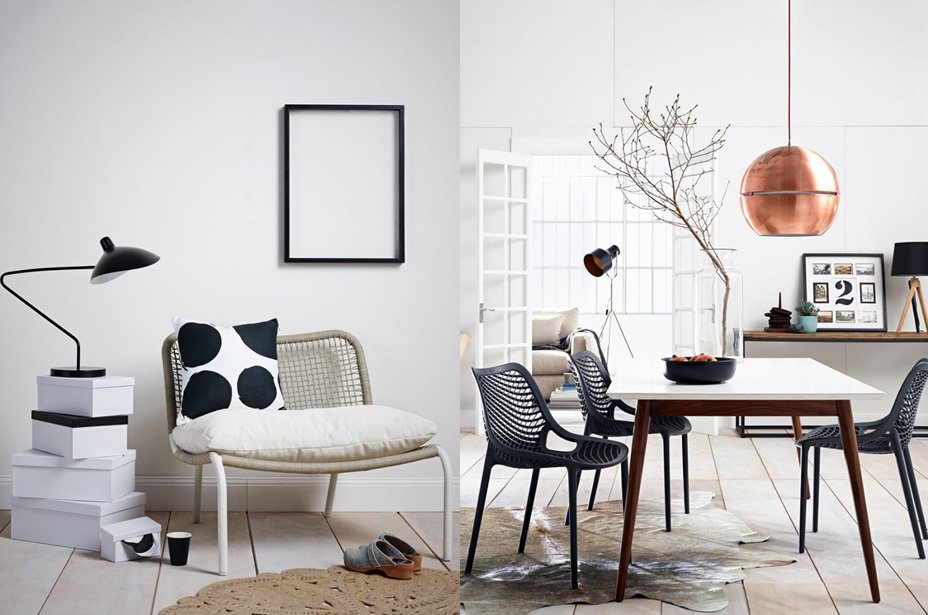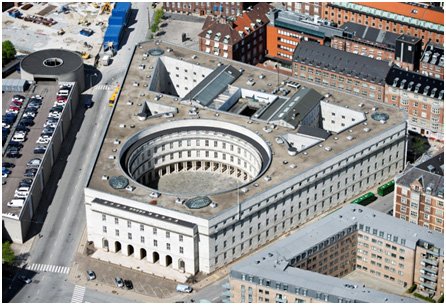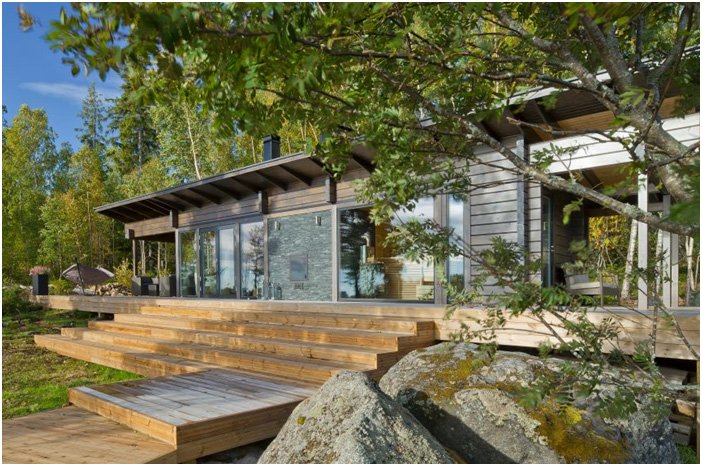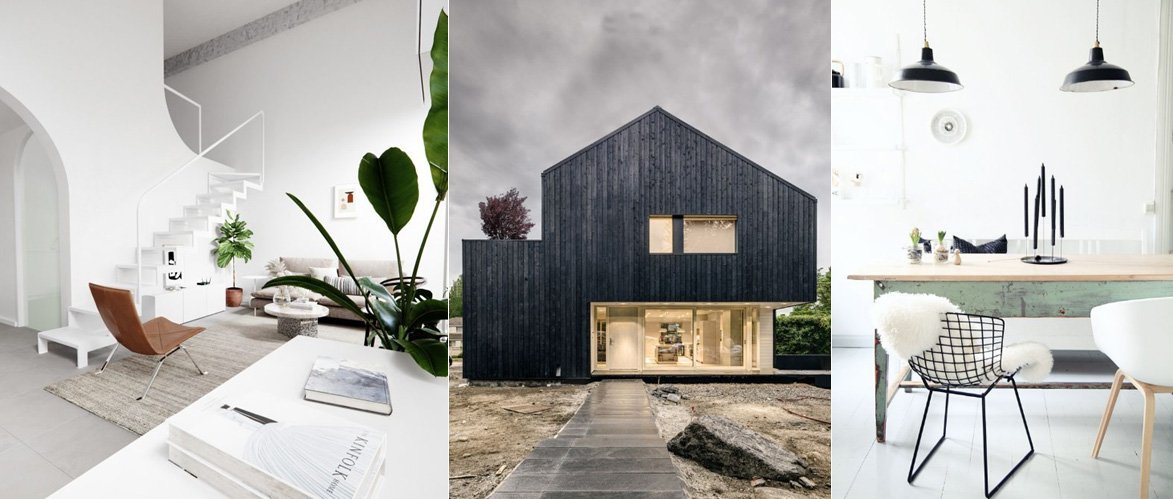Scandinavian: The Evolution Of A Universal Design Style
Scandinavian Architecture
Scandinavian design represents a design philosophy that’s characterized by functionality, simplicity, and clean lines.According to its design principles, one should be in harmony with his/her environment, and things should be made to last rather than be replaced. The climate of the Scandinavian countries is the one of the toughest to live in. Talking about the climate it is near 24 hours of light for several months of the year and near 24 hours of darkness for several months along with extreme temperatures, snow and sun. To counter these harsh conditions the Scandinavian architects concentrated on designs that make living easier. To complement the art of living well, the design philosophy promotes a simple home environment that enhances an unencumbered lifestyle.


Scandinavian History
Nordic Classicism presents the first English-language survey of an important yet short-lived movement in modern architectural history.
It was through the Nordic classical movement that Scandinavian architecture first attracted international attention. It was the Nordic Pavilions, rather than Le Corbusier’s modernism, which generated most admiration at the 1925 World Fair, and it was the Nordic classical architects – including Gunnar Asplund, Sigurd Lewerentz, and Alvar Aalto – who went on to establish Scandinavia’s reputation for modern design. Yet this brief classsical movement was quickly eclipsed by the rise of international modernism, and has often been overlooked in architectural studies.

The city Library in Stockholm Architect: Gunner Asplund

Copenhagen Police Headquarters Architect: Hack Kampmann
From Nordic Classicism to Functionalism
Just like some other European nations, Scandinavians had their own variation of Art Nouveau in the 19th century, called National Romantic style, and even a nationally-based version of Neo-Classicism, called Nordic Classicism. The latter was historically considered a mere transition between styles, but it has recently been reassessed and interpreted as an important, albeit brief period in Scandinavian architecture which did fall under direct influence of European Neo-Classicism (a style rather infamous among academic circles today), but it also represented an interesting “preface” to Modernism. Since Germany is geographically close to Denmark, the Danes started picking up the novelties and becoming interested in the “new architecture” that ruled Europe in the late 1920’s. The collaboration with the Germans and the vast influence of Bauhaus are frequently commended as key precursors of Modernism in Denmark, which soon inspired other Scandinavian countries as well. Finally, the 1930 exhibition in Stockholm is described as a defining moment of Modern Scandinavian architecture, and the one in which Nordic Classicism slipped into Functionalism once the two leading architects Gunnar Asplund and Sigurd Lewerentz displayed new architectural designs and said their final goodbyes to classical architecture.
Scandinavian Modern Design
Scandinavian modern design first made its appearance in the 1950s, spreading its wings first across Denmark, Norway, Sweden, Finland, and Iceland, and later around the rest of the world. Leading designer, Arne Jacobsen, helped to pioneer this key design movement and championed the concept of architectural functionalism. Architectural functionalism is the idea that one should always design with a purpose in mind – no frills without function. Hailing from Denmark, and a successful designer and architect, Jacobsen was a master at creating simple yet vividly memorable chair designs, most notably the Egg Chair. He remains a standing influence over Scandinavian home design to this day.

Principles and elements of Scandinavian Architecture
Scandinavian architecture is widely recognized for its clean lines and austere color palette, but this architectural style responds to more than just aesthetics.
Scandinavian Architecture is respected for designs that value simplicity, functionality and comfort, mixing modern techniques and vernacular methods to create spaces perfectly tuned for inhabitants who crave more than what meets the eye.
Integration with nature
Aside from its aesthetical beauty, Scandinavian design focuses on merging projects to their terrain and building with local materials, sentiments that can be adopted within any architectural style.

Simplicity in design
The subtle beauty of Scandinavian architecture and design is in its simplicity. There is nothing superfluous, unnecessary or useless. It is a simple composition with clean lines, basic shapes and solid colours.

Utilisation of natural light
One of the first things you’ll notice in most of Scandinavian buildings, from the Modern period until today, is their openness, both to the inside and the outside. Full-length windows are used very frequently, in order to let the maximal amount of sunshine into the interior. In fact, natural light plays a key role in architectural design, since it is regarded as one of the most valuable aspects, and thus it dictates the entire design process.
The light neutral palette abundant in Scandinavian architecture also responds to the need of capturing light. Light colors reflect light and illuminate spaces, working closely with glassed openings to illuminate the project’s interiors.
Creative use of natural materials
Timber and other natural materials are used to visually and physically warm interiors, functioning as natural insulators. Timber floors, panelled walls and stairs create warm spaces and a welcoming ambience.
Functionality and comfort
As mentioned above, long winters and cold weather mean Scandinavians spend much of their time indoors. This phenomenon gave birth to the concept of “hygge”, a trend that permeates every aspect of Scandinavian life, including architecture. This trend holds comfort as its main goal and one of the most important elements of Scandinavian architecture.

Conclusion
“The modern movement was called ‘Functionalism’ in Scandinavia and architecture and design were intended first and foremost to be useful,” says Cambridge, Massachusetts-based, architect Mette Aamodt, cofounder of the firm Aamodt/Plumb.
“Function combined with inspiration from nature creates a very warm strain of modernism that is very easy to relate to and continues to appeal to many people,”
-Mette Aamodt
Notable designers of the era—such as Finn Juhl, Hans Wegner, and Arne Jacobsen—frequently used teak, rosewood, birch, and ash in their furnishings, which lent warmth without being overly rustic. These designers achieved an elegant combination of practicality and sophistication that was perhaps unmatched by many of their contemporaries in other countries. As a result, many of their furnishings remain in production today.
“Scandinavian design is timeless because it is simple, beautiful, finely crafted, and made with natural materials” – Mette Aamodt
Scandinavian modern style has influenced contemporary interiors across the globe as well as corporate aesthetics (think: the aesthetics of West Elm and Room & Board, or the undying popularity of the Swedish firm who brought Scandinavian design to the masses: IKEA). However it has evolved, it remains as much about a look as it is about a lifestyle. To achieve this, these interiors incorporate natural elements, such as wood and natural fibers, with lots of texture. Mixing old and new furnishings and materials, highlighting craftsmanship over ostentation, and using light to bring interiors to life create further balance.
Regardless of their vintage, Scandinavian modern designs pair well with a wide variety of other styles. Where it comes to furnishings, designs such as Hans Wegner’s Wishbone chairs fit seamlessly with other pieces from multiple eras. “From Persian and Iranian rugs to Chinese and decorative arts—Scandinavian pieces go well with things that are much older,” says Matt Singer, owner of Open Air Modern, an antiques dealer in Brooklyn specializing in 20th-century Scandinavian and American furnishings. “They fit nicely in eclectic interiors, too,” he adds. A piece such as Arne Jacobsen’s Egg chair, for example, is neutral enough to complement period architecture but would suit a modern minimalist interior just as easily.
As people increasingly turn their homes into retreats from everyday stress, it’s no surprise that Scandinavian modern style is timeless. By focusing on quality over quantity and clean, clutter-free spaces, the philosophy behind this look helps create calm, focused spaces that provide relief from the always-on realities of modern-day life.



